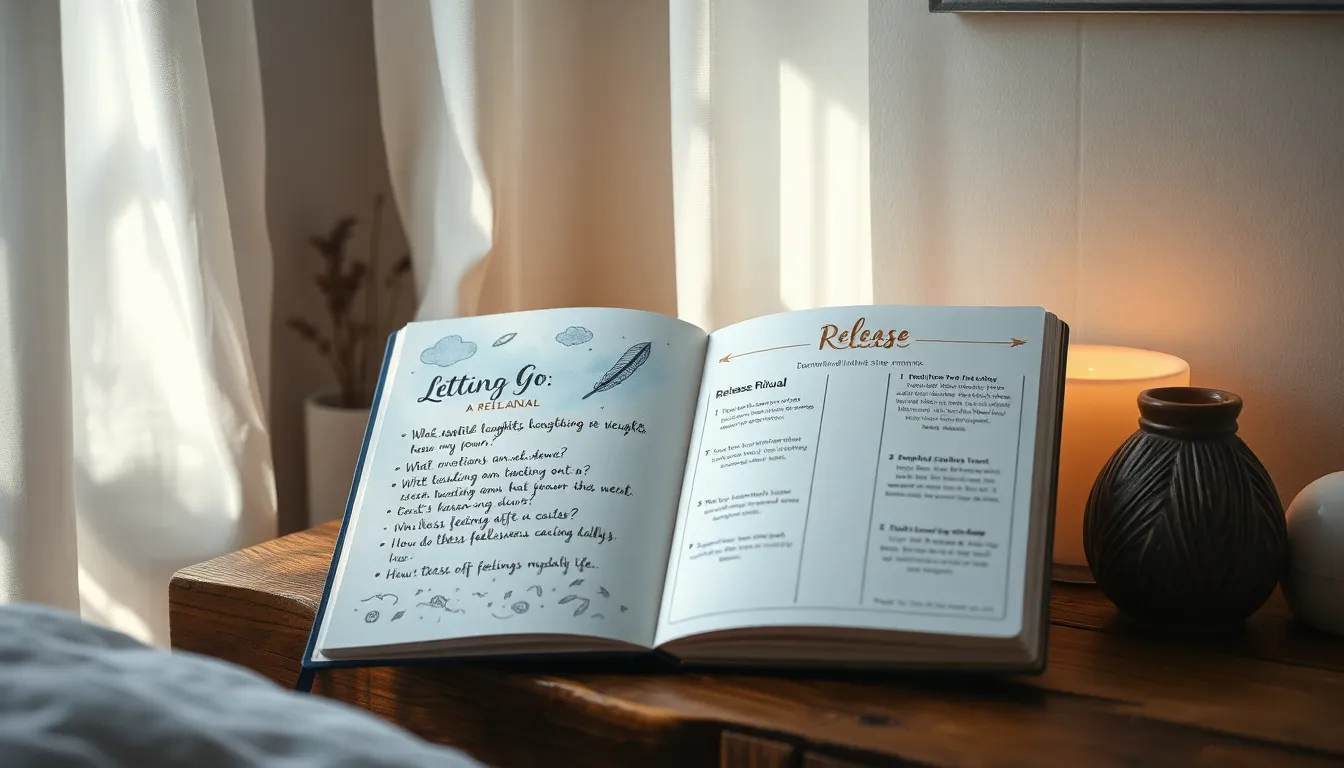In the whirlwind of life, negative thoughts and emotions can weigh us down. Journaling offers a gentle, transformative pathway to release and rejuvenate, nurturing mental clarity and emotional peace.
By embracing the pen, you’ll uncover hidden insights and foster self-compassion. Let’s explore this empowering tool to lighten your heart and brighten your journey.
Understanding the Power of Journaling

Journaling can transform negative emotions into clarity. Try the “brain dump” technique to release thoughts. Simply write without pause, allowing emotions to flow freely until you feel lighter.
Another approach is using prompts. Consider these:
- What am I grateful for today?
- What small step can I take to feel better?
These encourage positivity and forward movement.
Techniques to Identify Negative Patterns

To identify negative patterns, start by setting aside time to write about recurring emotions or events. Use prompts like: “What repeated thoughts burden me?” and “When do I feel most drained?”
As you journal, look for themes or triggers in your entries. List them using short bullet points:
- Common emotions
- Frequent triggers
Guided Prompts for Emotional Release

To begin, write about a moment today when you felt overwhelmed. Describe what triggered these emotions and how they affected you. This helps in acknowledging feelings and starting the release process.
Next, consider writing a letter to yourself. Express compassion and understanding towards your situation. Encourage yourself with kind words, focusing on what you learned and how you’ll move forward.
Transforming Thoughts into Positive Insights

Shift your perspective by turning negative thoughts into positive insights. Begin by writing down a troubling thought, then challenge it by asking, “What can I learn from this?” or “How does this make me stronger?”
Consider using a simple prompt to guide your reflection:
- “What is one positive aspect of this situation?”
- “How can I use this experience to grow?”
These questions can transform your mindset, fostering resilience and clarity.
Establishing a Consistent Journaling Routine

To create a consistent journaling routine, set a specific time each day. Integrate it into an existing habit, like morning coffee or bedtime, to build consistency effortlessly.
Focus on releasing negativity with simple prompts:
- “What do I need to let go of today?”
- “How can I show myself compassion?”
These encourage reflection and emotional release.
Conclusion: Creating Beautiful Outdoor Spaces
In exploring the transformative power of journaling to release negative thoughts and emotions within relationships, we delved into five pivotal concepts: understanding the roots of emotional triggers, embracing vulnerability through written expression, fostering empathy by reflecting on both personal and partner perspectives, identifying patterns of negative thinking, and setting intentions for healthier communication. By engaging with these concepts, you’re not only nurturing your emotional well-being but also cultivating a more harmonious connection with your partner.
To begin this journey towards emotional clarity and improved relationship dynamics, take a moment today to set aside 10 minutes for reflective journaling. Write freely about your emotions, focusing on any recent interactions that stirred negativity, and explore the underlying causes. This simple yet profound practice can illuminate pathways to deeper understanding and connection.
Remember, meaningful relationships thrive on continuous growth and understanding. Save or bookmark this article as a resourceful guide on your path to emotional resilience and relationship success. By consistently applying these insights, you’re investing in a future where relationships are not just sustained but flourish with genuine connection and mutual respect. Embrace this opportunity to transform challenges into stepping stones towards a more fulfilling and loving relationship.


